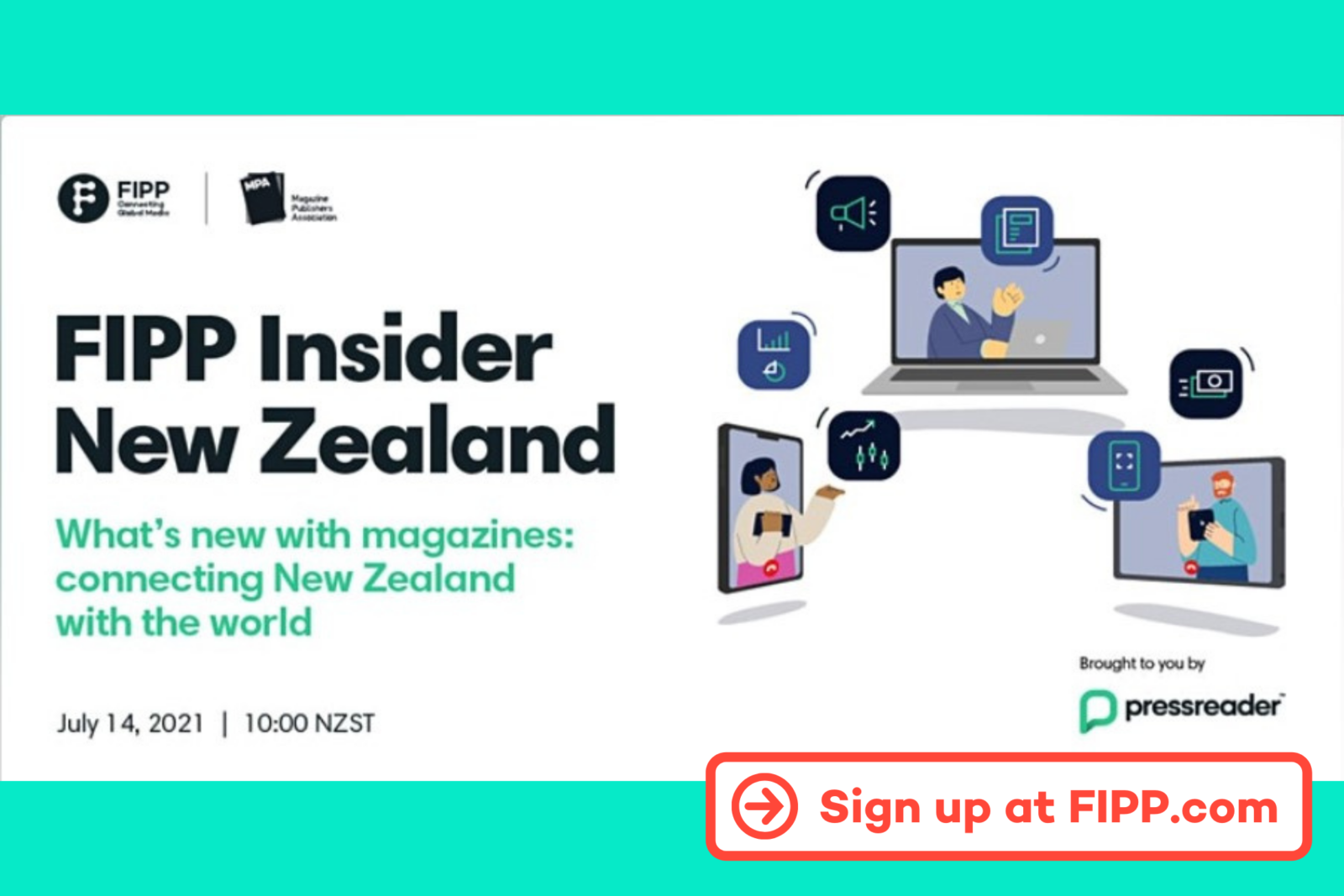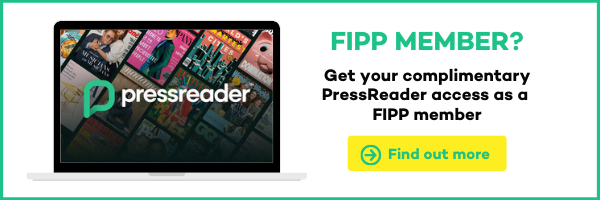Beware of shiny things: PressReader on current and future trends in subscriptions
There are few organisations that know more about subscriptions than PressReader. With decades of experience, the company operates in over 120 countries worldwide with a portfolio that spans thousands of titles.
PressReader is also one of FIPP’s biggest supporters, so it was with great enthusiasm that FIPP President and CEO James Hewes spoke with Nikolay Malyarov, CEO International and Chief Content Officer, PressReader, during the D2C Summit last month.
Now in its 22nd year, PressReader exists to connect people to the best magazine and newspaper content even in remote regions, but not as well known is the fact that for 18 of those years, it has been running a successful D2C subscriptions business as well. “PressReader really sits at the intersection of consumers, publishers and consumer facing brands,” explained Malyarov.
PressReader also publishes the publication The Insider, which covers current trends in business and journalism combined with expert analysis.
On the basis of PressReader’s wide remit and the behind-the-scenes knowledge he’s gained, Malyarov gave his view on the pandemic subscriptions bump, why its effects won’t be as transformative as some would hope, and where to better focus resources for future subs success.
View the full session with Nikolay Malyarov from the FIPP D2C Summit here:
How Covid-19 broke the news
“During the pandemic, we discovered the hard way that a business model of overreliance on advertising wasn’t sustainable,” Malyarov began. “We saw subscriptions soar in the first three months of Covid-19, when people were hungry for escapism and trusted news sources.”
This wasn’t to last, however. “We saw a slowing down of content consumption starting in May 2020,” he added. It seemed that despite the Covid bump, the willingness to pay for digital news didn’t change all that much since the Trump bump in 2016.
Now, the percentage of a given population that pays for online news is still low worldwide. Norway, Sweden, Brazil and Poland come near the top, with between 30-40 per cent of their populations paying for digital news in some form. Within English-speaking countries, there is a lot of diversity: the US figure stands at around 20 per cent, Australia’s just under that, and the UK coming in at 10 per cent.

Subscriptions: a case of shiny object syndrome?
All this renewed interest in subscriptions has nonetheless led to widespread investment in creating smoother digital offerings. As 2021 came around, a significant percentage of news organisations were making accelerating digital transformation a priority, Malyarov pointed out. This is something that, while not new in itself, has reinvigorated the notion that your digital value proposition matters, he added.
But he warned organisations not to get distracted. “In the media industry we have a tendency to chase a new idea, rather than focus on older and more established strategies for growing revenue,” he said.
“But we have to be careful about chasing moonbeams. You’ll get no argument from me that D2C is a key pillar of any strategy, but not all D2C strategies are created equal. The takeaway is: if you’re going to focus on D2C revenue, follow the money.”
Malyarov gave the example of revamped e-replicas of print editions as a place to look more closely. “This is the often-overlooked digital edition, the ‘ugly duckling’ of digital news,” he said. It was sidelined in previous eras, when some news organisations such as The Toronto Star and News Corp chased apps and other “shiny” formats.
But with many of these apps now having been shut down due to lack of uptake, it has become apparent that what readers wanted all along was a credible news source that suited their needs, said Malyarov. Attention has subsequently returned to e-replicas: “They were always drivers of revenue, even though neglected for a while,” he added.

E-replica editions have, in fact, had a huge resurgence during the pandemic. At PressReader, they were inundated with requests during the first phase of the pandemic especially, and that has held up to some extent.
“To put it into perspective, in the first 10 days of April 2020, we signed more digital replica contracts with magazines and publishers than we had the entire previous financial year, which ended just before the pandemic began,” said Malyarov.
One example is The Guardian, which went “from web to replica” by repackaging content from The Guardian Australia for its digital replica for tablets, in what’s called a compiled edition. “Many of its readers were on an aeroplane, so couldn’t read a web edition,” explained Malyarov.
Other online-only publications, including The Guardian’s US edition, have found similar success in repackaging web content into the layout for a specific segment of their audience. This is because it’s a finite, digestible format which can be read on or offline, according to Malyarov.

Shiny things can tarnish: churn remains a problem
It is clear that there has been a renewed interest in D2C strategies as a result of more digitised reader behaviour catalysed by the pandemic – but we shouldn’t assume it will last, warned Malyarov.
“As time has gone by, people have become frustrated with the fragmentation of subscriptions for multiple outlets. Many new readers in March had cancelled subscriptions by June, and perhaps even worse, many of them are never even using their subscription. In one Piano study, 39 per cent of subscribers hadn’t visited the website of the news site they subscribed to in the previous month.”
There are also high levels of churn among this group. “Churn is an ongoing threat. Covid created an anomaly, not a sustainable trend – we’re going to need experts in retention going forward.”
Referencing Thomas Baekdal in April 2021, Malyarov clarified that essentially, subscribers in 2019 need to be understood as different to subscribers in 2020. “The 2020 audience that came in obviously had a very specific need – so what happens when that need goes away? Well, so does the audience.”
Avoid the risks – diversify!
The risks of narrowing down to a single D2C strategy can be mitigated by avoiding that laser focus, explained Malyarov. By way of example, he said that Future plc is a brand that has created many options for sustainable growth, laid out in the chart below:

Condé Nast is another well diversified brand, recently announcing expansion of its emerging revenue streams including movies and TV licensing. Malyarov is also impressed by the company’s strong commitment to a sustainability strategy across four key areas, including physical materials and reducing CO2.
“There was the green issue of Vanity Fair, which precipitated an increased commitment to reporting environmental threats. They also launched the sustainable fashion glossary. All of this is just part of a highly diversified revenue mix.”
The thing about diversification, Malyarov emphasised, is that it grows reach – and reach can grow revenues. “Going it alone can be lonely, and having a digital product doesn’t mean that every internet user is a potential customer. But that’s why the successful companies are always looking for ways to expand their reach, for instance by including hotels, libraries, airlines, hospitals, consumer businesses etc. to locate more readers.”
Beware of shiny things and remember your sense of purpose
Malyarov ended by making the point that there is nothing wrong with any specific channel for growing revenues – but he thinks that media companies would benefit from revisiting what gives them purpose.
“Start with the why – what’s your why?” he asked. “Making profit isn’t a why; it’s a result. Think of Starbucks founder Howard Schultz, who said that ‘Starbucks isn’t about coffee, it’s about creating a third place between work and home’.”
When it comes to newspapers and magazines, audiences really care about the why. The New York Times, after being on the receiving end of Trump’s disparaging comments about its “failure”, had to shout out its “why” loud and clear – and audiences responded positively.
Subsequently, its 2018 Truth Campaign doubled subscriber base compared to the previous six weeks, in just 24 hours. The Times now famously leads the pack by a long way when it comes to digital subscriptions.

For PressReader, its mission relates strongly to sustainability and to universal access to high quality journalism. “Investing in the future gives a high ROI. During the pandemic we knew we’d take a financial hit, but we have a new appreciation of universal truths: quality journalism deserves compensation, and everyone in the world deserves access to quality journalism.”









